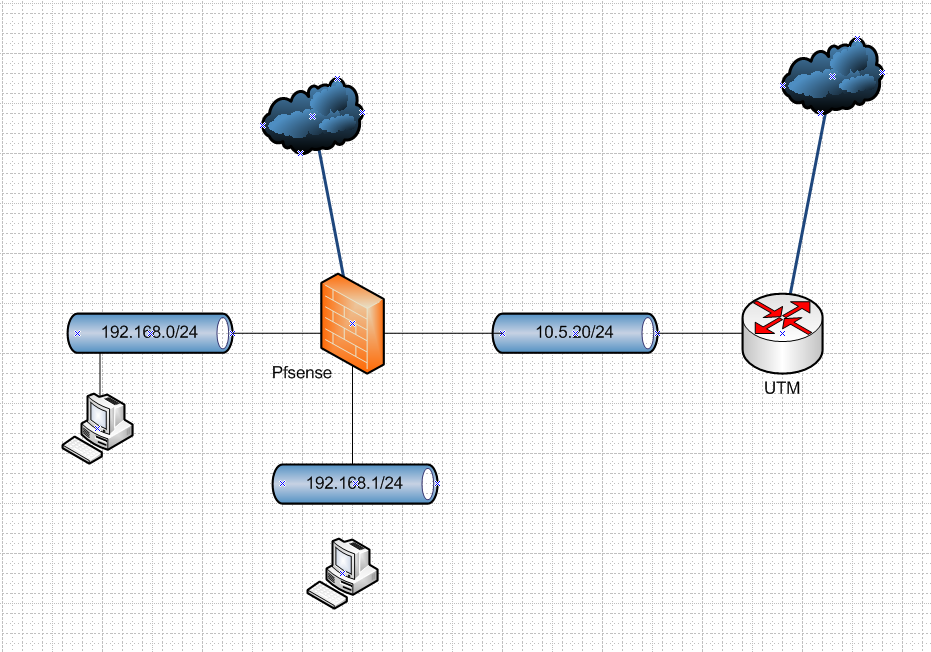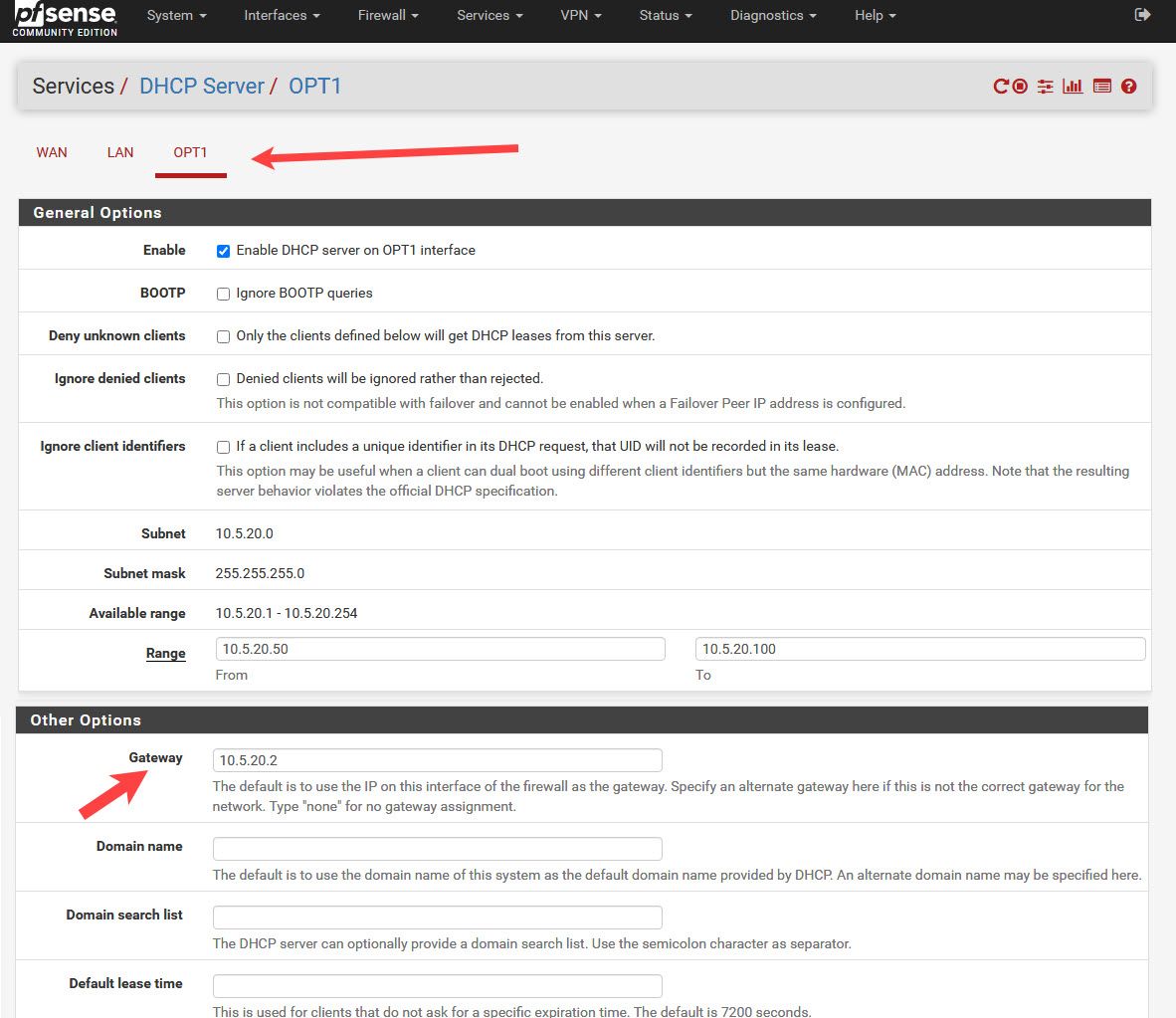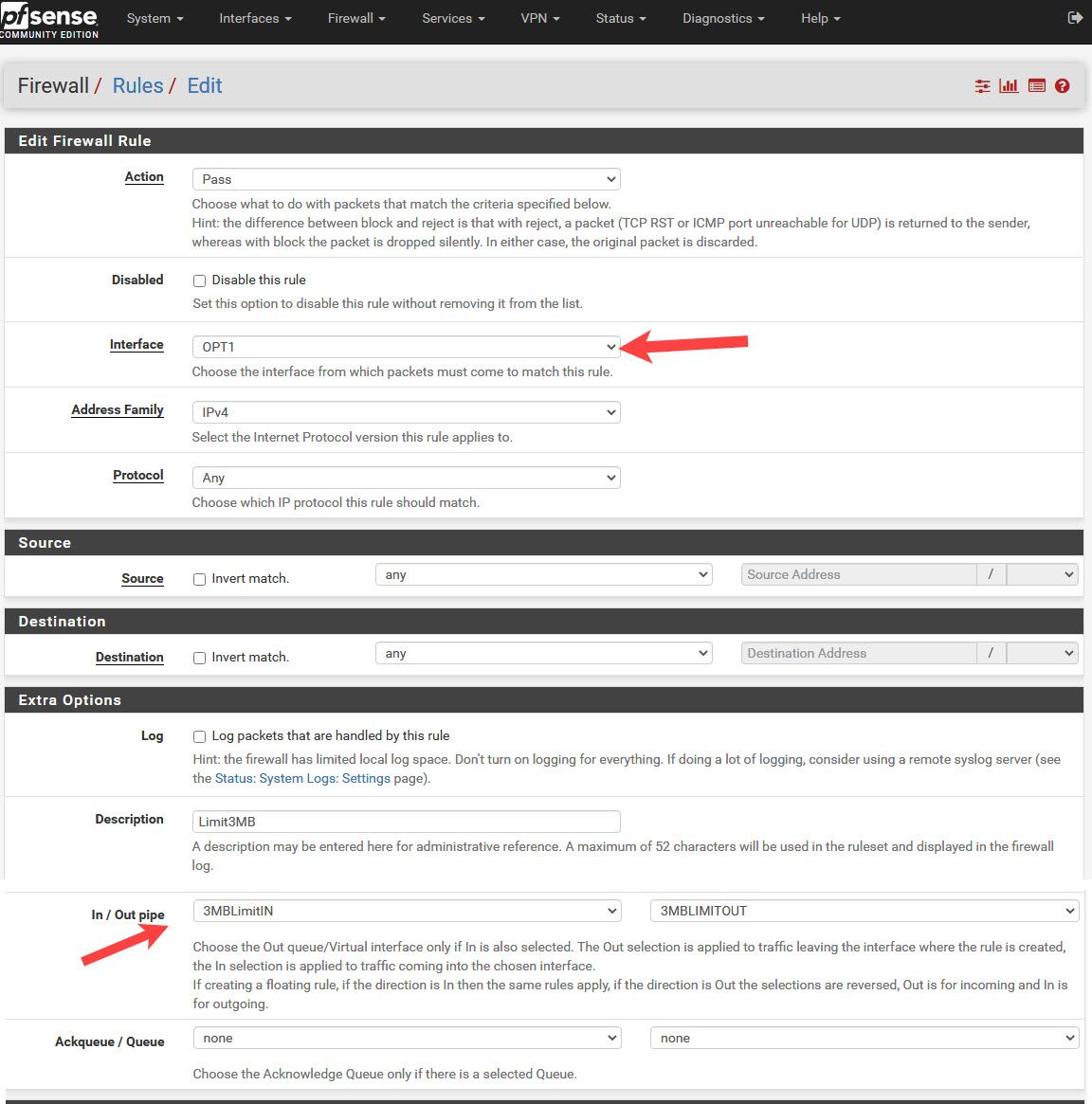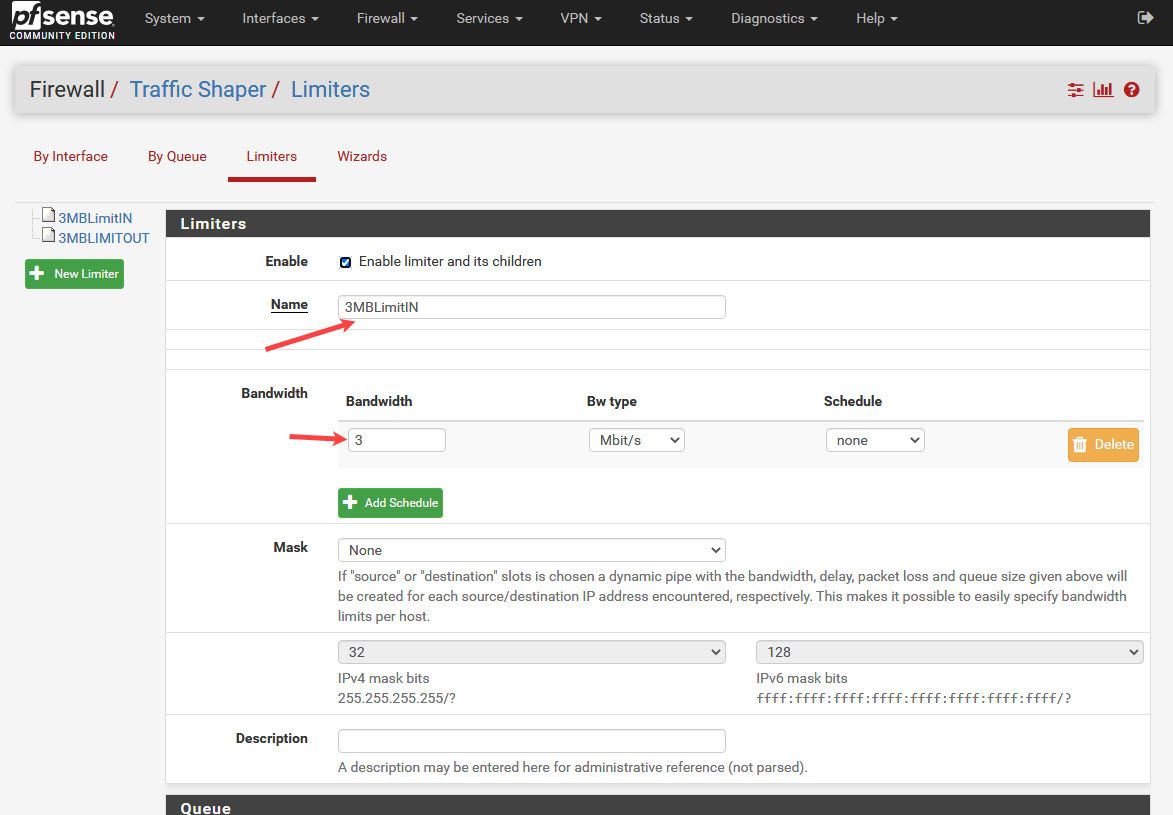Bandwidth Limiter does not work when Specific Gateway defined under DHCP
-
Ok, so what do you actually need to happen here? Traffic must go via the UTM? Unless it goes down?
Do you really have no access to the UTM?
-
No, I don't have full access to UTM, and even if I had it does not facilitate bandwidth control and some other features which only PFSense has.
So I prefer PFSense but for Internet for OPT1 subnet clients should go via UTMWhat I want:
PFSense OPT1: Clients shall get internet access from UTM on same internal subnet (10.5.20.x)
PFSense LAN1: Clients shall get internet from PFSense it self (working well) (192.168.2.x) -
Well the only way to route your traffic through pfsense and use utm for internet.. Would be to connect that UTM via a transit network on pfsense.
Then route it through, then you could do bandwidth limits..
-
Can you pls guide me how to set transit network in PFSense ?
I have never done it.Pls guide.
-
Its just another network that connects to the UTM that there are no hosts on.. It not different than any other network..

I take it you can not edit that 10.5.20 network on the UTM, or add another network on the UTM for your transit.. So use it as the transit
And move your devices currently on your opt1 interface to another network.
And that utm is prob not going to nat some other network? So just do natting to this network via pfsense. So utm sees all traffic as coming from pfsense IP in the 10.5.20 network.
-
Is there any tutorial for Creating Transit Network on PFSense, I have never done it.
Conceptually I i understood your method but do not know how to program it in PFSense.I am beginner when it comes to rules and transit network.
-
Did you create the network on opt1? Its no different..
Do you have another interface to use on pfsense, will you be using vlans via a switch?
-
@johnpoz said in Bandwidth Limiter does not work when Specific Gateway defined under DHCP:
Do you have another interface to use on pfsense, will you be using vlans via a switch?
I don't have extra interface. I guess I have to create VLAN interface in that case, correct?
Lets say OPT2 with (192.168.0) and then create rule same as OPT1? Pass any source any destination any protocol?
So, IP of 3 interface would be
LAN1: 192.168.1.1/24
OPT1: 10.5.20.1/24
OPT2: 192.168.0.1/24setup OPT2 DHCP and clients get IP with 192.168.0.1 gateway.
Then any rule or NAT to transfer OPT2 traffic to OPT1 UTM?
-
@johnpoz
Can you pls guide for above?
Thanks -
Yes. You will need to policy route that traffic to the UTM gateway though as well.
You could also use a failover gateway group so it client still have access if the UTM fails if needed:
https://docs.netgate.com/pfsense/en/latest/book/multiwan/policy-routing-configuration.htmlSteve
-
@sanketgroup said in Bandwidth Limiter does not work when Specific Gateway defined under DHCP:
Then any rule or NAT to transfer OPT2 traffic to OPT1 UTM?
Policy route would be needed to send them out the utm, whoever you want to go there be it lan or opt1 network.
As to outbound natting the traffic - would depend if utm is going to nat them out to the internet, do you have access to utm to setup the return route. If not then yeah you would have to nat.
-
Yup it would be much nicer to NAT in the UTM so that it can see the internal client IPs and filter/log accordingly. But to do that you would need to add a static route to the UTM and if you have no access that's not an option.
Steve
-
I tried to create rule as shown in screenshot below.
But still DHCP clients on OPT1 are getting internet from PFSense instead of UTM.DHCP Clients and UTM are on subnet.
PFSense DHCP Clients: 10.5.20.50-100
UTM: 10.5.20.2 (And it does NAT)i.e if I manual type in gateway as 10.5.20.2 (UTM IP) clients get Internet from UTM.
But PFSense DHCP clients get internet from PFSense even after rules shown in Scerenshot.I might be wrong with rules. Pls guide.
Thanks

-
That is not a policy route.. So no that wouldn't work!
And you have opt network on the same network as UTM? Already went over that would be asymmetrical.
Change your clients to a different network than this 10.5.20 network.. Use that 10.5.20 as your transit and policy route with a outbound nat.
Even if your UTM some other network, how would it know how to route back via pfsense to get to this other network.
-
Thanks for bearing with me and guiding me without any displeasure
Correct, my mistake for not setting up separate interface for DHCP.
Cannot create VLAN as PFSense is on VMWare workstation and On-board LAN card does not support Intel Teaming (Virtual adapter)
So I will have to arrange extra LAN port.If i am able to manage setting up return route on UTM then setup would be like this:
OPT1: 192.168.0.1 (DHCP: 192.168.0.50-100)
OPT2: 10.5.20.1Create Rule on OPT1:
Action = Pass /// Interface = OPT1 /// Source = OPT1 net /// question: Destination = shall it be Single Host (UTM 10.5.20.2) or OPT2 net
question: Destination = shall it be Single Host (UTM 10.5.20.2) or OPT2 net=============
If I am not able to create return path on UTM then create NAT in PFSense as follow:Make OPT2 as WAN2 Port and create NAT between OPT1 and WAN2/OPT2
-
@sanketgroup said in Bandwidth Limiter does not work when Specific Gateway defined under DHCP:
Action = Pass /// Interface = OPT1 /// Source = OPT1 net /// question: Destination = shall it be Single Host (UTM 10.5.20.2) or OPT2 net
That is not a policy route.. You have to select gateway in the rule if you want to route. 10.5.20.2 would be setup as a gateway in pfsense. Did you read the link provided?
You would then be able to create an outbound nat for it.. Hybrid is all that is needed.
As to your whatever your workstation does for cards and teaming - that has zero to do with vm passing tags or not passing tags for a vlan.. But sure if you want to create another vm nic and do it that way that works too.. How you do vlans and do your connections have little to do with the logistics of the network. Pfsense doesn't care if its a vlan or a native interface.. How you tie that to the physical world is up to you.


